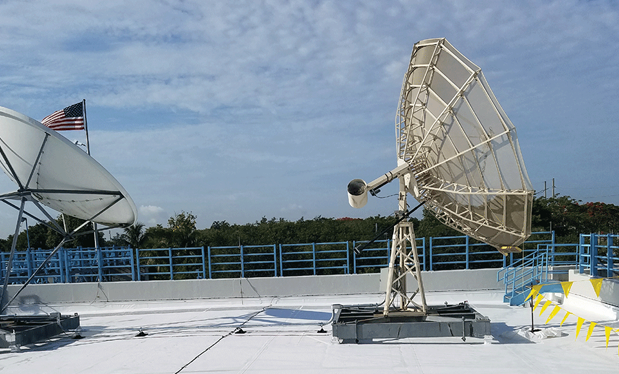In June 2017, the American Society of Civil Engineers (ASCE) published an updated edition of ASCE 7, "Minimum Design Loads and Associated Criteria for Buildings and Other Structures," (ASCE 7-16). Because ASCE 7-16 is referenced in the International Building Code,® 2018 Edition (IBC 2018) as the basis for design wind-uplift load determination for all roof assembly types except asphalt shingles and tile, you should be aware of the changes.
ASCE 7-16
ASCE 7-16's design wind-uplift load procedures are described and the basic design wind speed maps are provided in Chapter 26-Wind Loads: General Requirements. Design wind-uplift loads for roof assemblies typically are determined using ASCE 7-16's Chapter 30-Wind Loads: Components and Cladding.
Chapter 30 provides seven methods—referred to as "Parts"—for wind load determination. Part 1 applies to low-rise, enclosed or partially enclosed buildings. Part 2 is a simplified approach applicable to low-rise, enclosed buildings. Part 3 applies to enclosed or partially enclosed buildings higher than 60 feet. Part 4 is a simplified approach applicable to enclosed buildings higher than 60 feet but less than 160 feet in height. Part 5 applies to open buildings of all heights. Part 6 applies to building appurtenances, such as roof overhangs, parapets and rooftop equipment. And Part 7 applies to nonbuilding structures, including rooftop solar panels.
Part 2 and Part 4 apply to most buildings and likely will be used by most roof system designers. These simplified approaches include tables in Chapter 26 and Chapter 30 instead of analytical calculations.
Significant changes
Comparing ASCE 7-16's wind-uplift design procedures with those of the previous version, ASCE 7-10, reveals several notable changes.
ASCE 7-16's basic design wind speed maps differ from ASCE 7-10's maps. Although the wind speeds along the U.S. Atlantic and Gulf of Mexico hurricane coastline are similar, ASCE 7-16's wind speeds in the central U.S. are slightly lower and in the West are notably lower than ASCE 7-10's wind speeds. Also, ASCE 7-16's maps include midpoint indicators between the maps' wind speed contours. Interpolation between the wind speed contours is permitted.
ASCE 7-16's external pressure coefficients are generally higher than those of ASCE 7-10. ASCE 7-16's Zones 1, 2 and 3 external pressure coefficients have increased about 70 percent, 28 percent and 14 percent, respectively, from ASCE 7-10. These external pressure coefficient increases generally will result in higher design wind-uplift loads in ASCE 7-16's Zones 1, 2 and 3 than ASCE 7-10's zones. ASCE 7-16 also includes a new Zone 1' pressure coefficient that is about a 10 percent reduction from ASCE 7-10's Zone 1.
ASCE 7-16's zone diagrams, which define the rooftop configurations to which the external pressure coefficients apply, generally differ from and are somewhat more complex than those in ASCE 7-10 and other previous editions. For example, for flat, hip and gable roofs with slopes less than 7 degrees (about 1.5-in-12 slope), ASCE 7-16 has a zone diagram that applies to buildings 60 feet and less in height and another diagram that applies to buildings taller than 60 feet. ASCE 7-16's zone diagram for buildings 60 feet and less has a Zone 1' in the center of the roof area's field and is surrounded by Zone 1. Zone 2 is at the roof area's perimeter and generally is wider than ASCE 7-10's Zone 2. ASCE 7-16's Zone 3 is an L-shaped corner that occurs inside the width of Zone 2 and is somewhat smaller than that in ASCE 7-10.
For buildings with flat roof assemblies greater than 60 feet in height, ASCE 7-16's zone diagram is similar to ASCE 7-10; however, the external pressure coefficients are greater.
The changes in the configurations of the zone diagrams and the magnitude of the associated external pressure coefficients are important considerations because these define the regions and extent where additional perimeter and corner attachment enhancement generally are necessary.
Closing thoughts
The changes incorporated into ASCE 7-16 will result in increased design wind-uplift loads and more complex perimeter and corner zones for most roof system designs. It remains to be seen how implementation of ASCE 7-16 will affect specific roof system designs. In many instances, additional perimeter and corner attachment may be necessary to satisfy ASCE 7-16's higher loads.
I encourage roof system manufacturers and designers to provide applicators with specific and straightforward guidance for any enhancements that are necessary where ASCE 7-16 applies.
NRCA has updated its Roof Wind Designer online application (www.roofwinddesigner.com) to include design wind-uplift load calculations based on ASCE 7-16's simplified approaches in Parts 2 and 4.
ASCE 7-16 can be purchased by accessing the publications tab of ASCE's website, www.asce.org.
Mark S. Graham is NRCA's vice
president of technical services.
@MarkGrahamNRCA
For an article related to this topic, see "How do I load thee?" October 2017 issue.
This column is part of Research + Tech. Click here to read additional stories from this section.



